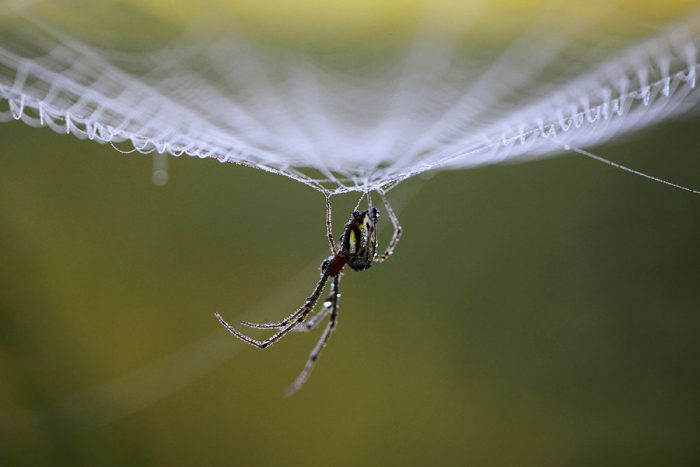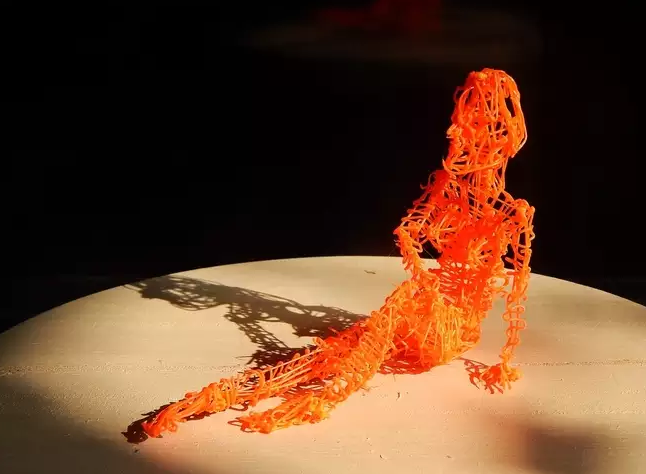ICYMI: Highlights from the week that was March 11 – March 17, 2018
No one can keep up with everything, so let us do it for you. We’ll gather the top Smithsonian stories from across the country and around the world each week so you’ll never be at a loss for conversation around the water cooler.
This week, we saw how history can overlook some of the most compelling stories, thought about the evolutionary imperative to adapt and were relieved that cruelty to crickets is no longer a fun, family activity.
A Place to Come Together on Matters That Divide Us
That’s one role of the new National Museum of African American History and Culture, says its director, Lonnie Bunch.
National Geographic, March 12
Lonnie Bunch, 65, has been an author, an educator, and a historian. Each vocation shaped him for the job he has today: founding director of the Smithsonian National Museum of African American History and Culture in Washington, D.C. Bunch recently was interviewed by National Geographic Editor in Chief Susan Goldberg. Read the full interview.
Keeping Crickets for Luck, Song, and Bloodsport
JSTOR Daily, March 13
The Virtue in Vice is an exhibit at the Cooper Hewitt Smithsonian Design Museum in New York dedicated to exploring how indulgences and decadence are amplified through design. The exhibited objects range from an eighteenth-century earthenware flask slyly shaped as a book, to the 1967 “Tongue Chair,” designed by Pierre Paulin with undulating curves for lounging. Three of the most diminutive objects are cages. Too tiny for birds, they were made in Italy and Japan for crickets.
As Nick Stagliano, a curatorial fellow in the Cooper Hewitt’s Product Design and Decorative Arts Department, explains in a post, one of the cages dates to 1903 Florence, Italy, and is labeled “for Ascension Day.” In Italy, particularly Florence in the late nineteenth and early twentieth centuries, crickets were given to friends on the day celebrating Jesus’s Ascension. If it chirped, your year would bring good luck. If not, well, there would always be next year. Read more from Allison Meier for JSTOR Daily.
An evolutionary spinoff
Spiders may owe their evolutionary success to one unusual organ.
The Christian Science Monitor, March 13
Some time more than 300 million years ago, an ancient arthropod evolved a trait that would become the bane of countless insects and, today, people walking through their basements. Fed by a set of microscopic spigots secreting a material that is, ounce for ounce, stronger than steel, this organ gives its bearer the ability to catch prey, protect its eggs, and hitch a ride on the wind.
Known as a spinneret, this organ is key to a spider’s ability to direct its silk precisely. And it might just explain why spiders have been such an evolutionary triumph. Read more from Eva Botkin-Kowacki for The Christian Science Monitor.
The Smithsonian Will Premier 4 New Space Documentaries in March and April
Geek.com, March 13
We’ve had a lot of major wins for space flight recently, including but certainly not limited to the monstrous Falcon Heavy launch last month. In an apparent nod to the endless march of astral discovery, the Smithsonian Channel will be airing two pairs of back-to-back documentaries in March and April. The first of which, “Billionaire Space Club” is about exactly the people you think it is.
Elon Musk, Richard Branson, and Jeff Bezos all feature prominently, as the film looks at the big push the private sector of space flight has seen thanks, in large part, to billionaire visionaries. The film probably won’t be looking at the seedy things these folks did to make their stacks, but I digress. Brian Cox hosts the premier, which will run March 25 8 pm EDT and PDT. Read more from Daniel Starkey for Geek.com
Smithsonian acquires Academy drag group’s archives
Washington Blade, March 14

Members of the Academy joined Mame Dennis, center front, for the organization’s 50th anniversary in 2011. (Washington Blade file photo by Michael Key)
The Smithsonian Institution’s National Museum of American History announced on Tuesday that it has acquired through a donation the archives of the Academy of Washington, D.C., an LGBT organization that produced nationally recognized extravaganza drag pageants.
“The Academy was a leading private organization in the Washington, D.C., metro area presenting, mentoring and championing female and male impersonation in the nation’s capital for 54 years,” a statement released by the history museum says. Read more from Lou Chibbaro Jr. for the Blade.
Our ancestors in East Africa were making sophisticated tools far earlier than we thought
PBS NewsHour, March 15

Early Stone Age hand axes compared to the newly described, more advanced tools of the Middle Stone Age. Photo by Human Origins Program, Smithsonian
In East Africa 800,000 years ago, major earthquakes and extreme changes in climate shook the region and transformed the landscape. Over the following 500,000 years, 85 percent of the animals – including species of elephant, horse and monkey – went extinct, and smaller creatures emerged.
A startling set of studies released Thursday show that something else was happening during this time: our early human ancestors were making sophisticated tools, tens of thousands of years earlier than previously known.
The research, led by the Smithsonian National Museum of Natural History and published in Science, rewrites the timeline on the use of color pigments, the manufacturing of sophisticated tools and long-distance trade. Read more from Teresa Carey for PBS NewsHour.
Even plastic art decays, but museum curators are on the case
Scientists can help them save their polymer-based collections.
Popular Science, March 15
On its face, art is often about beauty. From Mona Lisa’s demure smile to the blue dapple of Monet’s “Impression, Sunrise,” we flock to museums and galleries in search of the sublime. Museum curators ostensibly choose to dedicate their lives to art for the same reason—a profound desire to be closer to beauty—but they quickly learn something many viewers don’t: That art is more often a story of decay and destruction.
Take Leonardo Da Vinci’s other great work, “The Last Supper.” Painted on the wall of a dining hall in a church in Milan, the mural survived a World War II bombing, the carving of a door through Jesus’s feet, and the more mundane—but dastardly—progression of time. Within just two decades of its completion, poor paint and an uncontrolled climate meant the mural was flaking. After just six decades, “The Last Supper” was described as “ruined,” the Apostles unrecognizable. Multiple restorations, namely one project stretching from 1978 to 1999, have brought back its original luster, but the lesson is there. Much like the humans who make it, art is always on the verge of falling apart. Read more from Eleanor Cummins for Popular Science.
Enslaved Black People: The Part of the Trail of Tears Narrative No One Told You About
Atlanta Black Star, March 17
Contrary to the popular historical narrative, the Union’s effort to rein in the Confederacy and end the secessionist military rebellion now known as the Civil War was incomplete upon the iconic April 9, 1865, surrender of Robert E. Lee at a Virginia courthouse in Appomattox. While ending the conflict in Virginia, the legendary courthouse meeting between Lee and Union General Ulysses S. Grant prompted a series of subsequent surrenders in numerous Southern states and Western territories over the following months. On June 23, a full two-and-a-half months after Appomattox, the war finally came to its conclusion at the Doaksville settlement in present-day Oklahoma with the surrender of Stand Watie, the last Confederate general to lay down his arms. Read more from D. Amari Jackson for the Atlanta Black Star.
Posted: 18 March 2018











